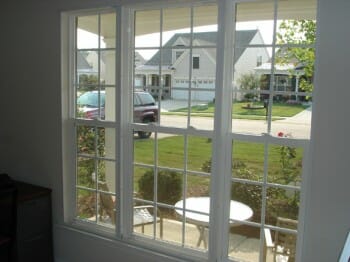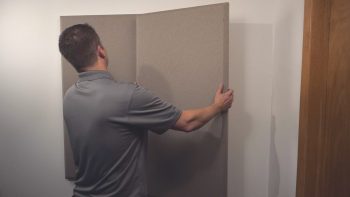What You Need to Know About Acoustics
Do you ever find yourself at your office, at a busy downtown intersection, in an industrial plant, a restaurant or a studio, or simply in your home, and you’re unhappy because unwanted noise is interfering in your life?
If so, you’re far from being alone. Noise pollution comes in many different forms and under many different circumstances. It has emerged as a leading environmental problem.
The World Health Organization has noted that noise is an underestimated threat to both short- and long-term health problems, such as sleep disturbance, cardiovascular problems, decreased professional and academic productivity, and hearing loss – to name just a few.
Besides personal comfort considerations, noise pollution and acoustic environments are becoming increasingly important concerns in industrialized and metropolitan centers.
Regardless of the context or the severity, if you’re dealing with an acoustical problem in your home, you’ll benefit from a little bit of a primer in general acoustics, soundproofing, and acoustical treatments.
When you understand the nature and source(s) of your particular acoustical problems, you’ll also be better equipped to make informed and cost-effective decisions for your budget.
The Absolute Basics: Soundproofing vs. Acoustical Treatments
When you first step into the world of acoustics, you immediately encounter the terms, “soundproofing” and “acoustical treatments”. Because they’re very distinct concepts, it’s important to clearly grasp the distinction between them since it’s not uncommon to confuse or equate the two concepts at first glance.
Soundproofing is about keeping external noise outside and keeping internal noise inside. Acoustical treatment, on the other hand, is about molding the quality of the sound inside a space.
Here it is in its simplest form:
Soundproofing = Less noise
Acoustical treatments = Better sound
Soundproofing Essentials
 Soundproofing blocks sound from entering or leaving a space. It’s very much like the weatherproofing that keeps weather outside your house and heating and cooling inside your house. You have to seal every nook and cranny to achieve the highest thermal efficiency by keeping the two environments totally isolated from each other.
Soundproofing blocks sound from entering or leaving a space. It’s very much like the weatherproofing that keeps weather outside your house and heating and cooling inside your house. You have to seal every nook and cranny to achieve the highest thermal efficiency by keeping the two environments totally isolated from each other.
Soundproofing is just the same: you need to keep external noise outside and keep sound inside.
As with thermal insulation, the system is only as strong as its weakest link. Even the highest R rating, insulation won’t stop the heat from—literally—going right out the windows and doors if you don’t seal all the leaks around them and their frames – not to mention the walls, floors, and ceilings.
Similarly, with soundproofing, you can put all the sound panels you want on the walls, but they really won’t do you much good if you don’t seal the gaps in the window and door frames, as well as the ceiling and floor junctions, electrical and lighting outlets, and heating and ventilation systems.
Sound is just like air or water: if there’s a way to get through something, it will, so you have to totally seal and isolate the inside environment from the outside and vice versa.
Believe it or not, a 1 percent opening in a wall or doorway will reduce the sound blocking effectiveness of that barrier by as much as 50 percent!
Some Sound Leaks Are Easy Fixes: Doors and Windows
Using our Door Seal Kit is the simplest way to begin soundproofing your space. It’s easy to install (there’s a video for that), and it offers a truly effective solution at a great price. And, for the highest quality of sound-blocking performance, our Studio 3D™ Soundproof Interior Doors are rated up to STC 56 and we can customize them to any size specification.
For external windows, you can use our Climate Seal™ Acoustic Series Window Inserts which block sound across all frequency levels. They look great, and they reduce sound by up to 60% from pre-existing levels. For internal windows, you can also install our soundproof interior windows to ensure that no noise will leak in or out.
But What About Lightweight Walls and Thin Floors?
As discussed above, soundproofing means maximizing isolation by sealing all the gaps, but it also involves increasing the mass and density of the walls, floors, and ceilings. The thicker and denser they are, the less sound will be able to penetrate them.
Internal walls often share studs and transmit sound easily, but various approaches exist to deal with this. You can de-couple walls or double-up drywall layers with a low frequency blocking material like Green Glue. This serves to both increase walls’ density and isolate them from adjacent spaces.
There are also many ways to soundproof floors which typically employ an underlay with sound absorbing qualities, such as our ACOUSTIK™ Sound Deadening Floor Underlay. Alternatively, our DURACOUSTIC S.T.O.P.™ Floor Impact Noise Reduction Underlayment offers a cost-effective solution which reduces impact and airborne floor noise and can be used with a variety of floor finishes.
Acoustical Treatment Essentials: Balancing Absorbers and Diffusers
Acoustical room treatments aim to improve sound quality within a given space by controlling the way sound is reflected, absorbed, and diffused by the interior surfaces.
If you will, imagine that sound is like an infinite number of really small rubber balls. If they were to all get simultaneously pelted in every direction at the highly reflective interior surfaces of a room, well, to put it mildly, all hell would break loose.
So we need to turn hard, flat surfaces like walls and ceilings into sponges that can absorb some of the sound energy, but we can also add curved diffusers that alter the surface of walls or ceilings. This helps to scatter sound, thereby reducing echo, while still retaining some of the natural reflections that we use to make sense of our spacial positions.
It’s really about finding the right balance between absorption and diffusion. Overdoing the absorption can lead to a dead-sounding space, but not having enough can result in too much reverberation and unwanted echo.
Absorber Panels for Walls
 NOISE S.T.O.P. FABRISORB™ fabric-wrapped wall panels are affordable fiberglass sound absorbers that deliver high performance at an affordable cost. They’re easy to work with, and you can install them on nearly any wall surface to provide reduced echo and reverberation. They come in many color and size combinations and do a great job of taming overly-reflective rooms.
NOISE S.T.O.P. FABRISORB™ fabric-wrapped wall panels are affordable fiberglass sound absorbers that deliver high performance at an affordable cost. They’re easy to work with, and you can install them on nearly any wall surface to provide reduced echo and reverberation. They come in many color and size combinations and do a great job of taming overly-reflective rooms.
CFAB Cellulose Sound Absorber Panels are also very cost-effective, offering great performance at a low price. They control and deaden noise, reduce airborne sound transmission from surface reflections. They have a Class A Fire Rating, they’re easy to install, and they resist mold growth.
Sound Silencer™ acoustical sound panels are also Class A fire rated with STC and NRC ratings alike. They’re non-fibrous and resistant to moisture, impact, fungi, and bacteria. These panels provide high-performance sound blocking and absorption, so they’re another fantastic option for you to consider.
Ceiling Treatments
Hybrid materials like Noise S.T.O.P.™ Sound Barrier Acoustical Ceiling Tiles combine soundproofing and acoustical treatment properties in one product. They incorporate a noise barrier on the back of the tile to help block sound, as well as sound absorption on the front that helps to mitigate echo and reverberation. You can also use Envirocoustic™ Wood Wool Ceiling Tiles which help to reduce echo and reverberation by absorbing sound
Conclusion
It’s really about finding the right balance between absorption and diffusion. Overdoing the absorption can lead to a dead sounding space, but not having enough can result in too much reverberation and unwanted echo.
For as many different spaces and acoustical challenges as there are, just about as many different strategies exist to contend with them. The size, layout, proportion, and nature of the surfaces of a room determine its acoustical qualities, whether good or bad, but the same principles always apply in acoustical treatments. And striking the right balance between absorption and diffusion is the key.
For more information and a wealth of resources, please visit https://www.acousticalsurfaces.com/.



